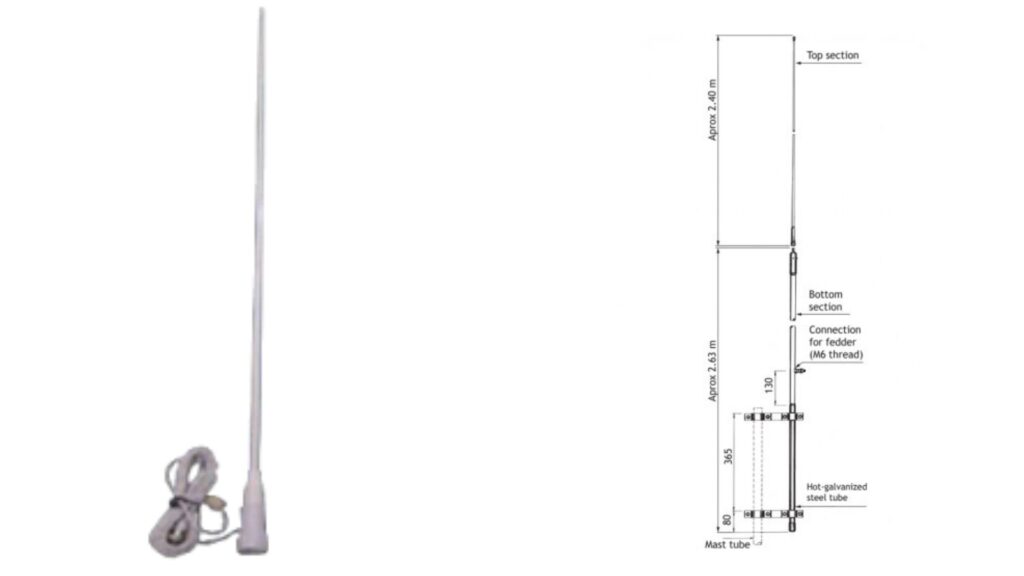Exploring Antennas for Radio Communication on FPSO Vessels
Antennas for radio communication on FPSO vessels play a pivotal role in enabling effective radio communication with onshore facilities, other vessels, and helicopters. Let’s dive into the various types of antennas used on FPSO vessels and their specific applications.

VHF Antennas
Very High Frequency (VHF) antennas are essential for marine communication. They operate in the 30 MHz to 300 MHz range, commonly used for ship-to-ship and ship-to-shore communication. VHF antennas are favored for their:
Line-of-Sight Communication
VHF signals travel in straight lines, making them ideal for relatively short-range communication.
Weather Resilience
They perform reliably in various weather conditions, which is crucial for FPSO operations.
Standardization
Many maritime communication protocols, such as the Global Maritime Distress and Safety System (GMDSS), rely on VHF frequencies.
HF Antennas
High Frequency (HF) antennas operate in the 3 MHz to 30 MHz range. They are used for long-distance communication, often essential for remote offshore operations where other communication infrastructures might be limited. Common applications include long-range communication with onshore command centers, weather updates, and logistical coordination.
Long-Range Communication
HF signals can travel thousands of kilometers, bouncing off the ionosphere, making them ideal for contacting distant onshore facilities.
Versatility
Suitable for voice communication, data transmission, and even email via radio.
Emergency Use
Vital for long-distance distress signaling when other systems fail.

Satellite Antennas
Satellite antennas are indispensable for modern FPSO operations, providing a direct link to satellites orbiting the Earth. Applications include Internet connectivity, video calls, real-time data transmission, and remote monitoring and control systems. They offer several advantages:
Global Coverage
Enabling communication anywhere in the world, which is essential for FPSOs operating in remote areas.
High Bandwidth
Supporting high-speed data transmission, including video conferencing, internet access, and real-time monitoring.
Reliability
Providing a stable connection less affected by the line-of-sight limitations of VHF and HF antennas.
UHF Antennas
Ultra High Frequency (UHF) antennas operate in the 300 MHz to 3 GHz range. They are used for specific communication needs on FPSOs, including onboard crew communication, helicopter landing coordination, and high-speed data links for close-range operations. Other features include:
Short-Range Communication
Ideal for onboard communication and with nearby vessels or helicopters.
High Data Rates
Suitable for applications requiring higher bandwidths over short distances.
Portable Solutions
Often used in handheld radios and other portable communication devices.
Microwave Antennas
Microwave antennas operate at frequencies above 3 GHz and are used for point-to-point communication links. Applications include high-speed data links, video transmission, and specialized communication needs requiring high throughput.
High Bandwidth
Supporting high-speed data transmission, essential for transmitting large amounts of data quickly.
Focused Beams
Providing directional communication links that are less susceptible to interference.
Fixed and Mobile Use
Can be mounted on FPSOs for fixed links or used in portable setups for flexible communication needs.

Starlink Antennas
Starlink antennas are the latest addition to maritime communication solutions, developed by SpaceX. They provide high-speed internet through a constellation of low Earth orbit (LEO) satellites. This system enables real-time data monitoring and transmission, crew internet access, telemedicine, remote diagnostics, and enhanced operational efficiency.
High-Speed Internet
Offering broadband speeds up to 150 Mbps or more, enabling real-time data transfer, video conferencing, and seamless internet access.
Low Latency
The low Earth orbit of Starlink satellites results in lower latency compared to traditional geostationary satellites, which is critical for real-time applications.
Global Coverage
Continually expanding, Starlink aims to provide coverage even in the most remote oceanic regions, making it ideal for FPSOs operating far from shore.



Get the Right Team
Antennas are the backbone of radio communication on FPSO vessels, each type serving a unique purpose to ensure seamless and reliable communication. From VHF for local coordination to satellite antennas for global connectivity, the right combination of these technologies ensures that FPSO operations run smoothly and safely.
Team Vivo Asia is skilled and experienced in the design and commissioning telecom systems, including antennas for radio communication on FPSO vessels. Contact us today to discuss your requirements!
